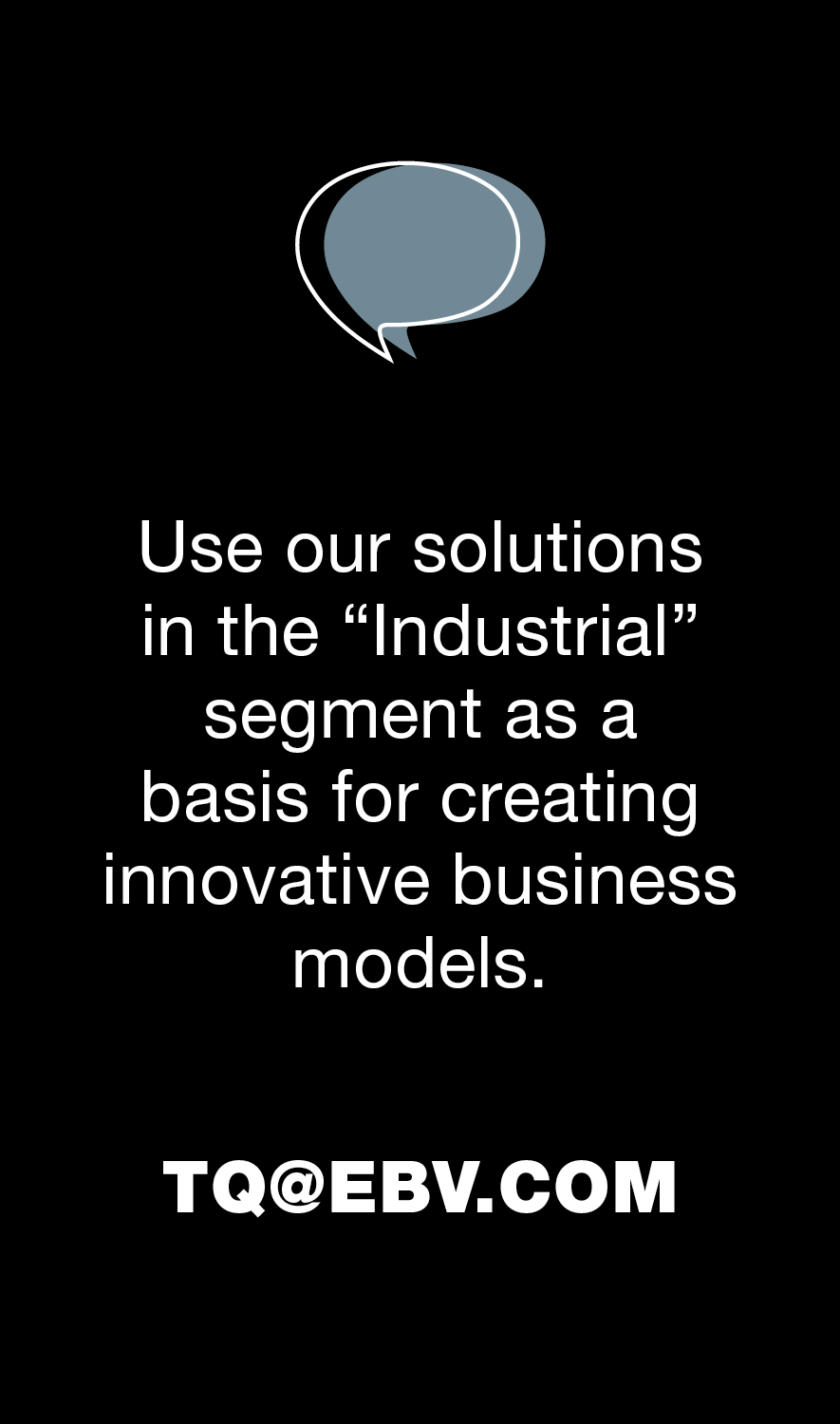Digitalisation in industry is not only facilitating more efficient production processes. It is also revolutionising business models. Manufacturers no longer earn money merely from selling a machine. Now they are also paid for related services and they are even paid according to the volume of goods produced on it.
Networked machines that communicate with one another. Robots that carry out repairs. Automated maintenance of machinery. The next industrial revolution – Industry 4.0 – is in full swing in our modern factories. It is largely based on comprehensive acquisition of large volumes of operating data by intelligent components and sensors. Edge-computing technologies filter and analyse the data in situ. The preprocessed data is then transferred to the Internet of Things, where analysis platforms can use it to generate a huge range of information for operating the factory or organising material flows.
Data as the basis for new services
Consolidation of data and the use of artificial intelligence are also opening up totally new services and business models. “Whether it is in automotive engineering, machinery manufacturing or electronics. Industry 4.0 is ensuring that traditional business models are being enhanced, optimised or even completely replaced by new technologies across all sectors”, says Achim Berg, President of the German association Bitkom. “Companies can supply their products in entirely new ways. This not only makes them more service-focused, it helps them to remain competitive internationally.”
Digitalisation makes new services involving maintenance and servicing of machines and plants possible. Manufacturers have access to the operating data acquired on their machine installed for a customer. By continuously evaluating this data, they can predict future issues in the production process and carry out maintenance and repairs in good time. The customer benefits from minimised downtimes and higher productivity. This service thus has a genuine value for which the customer pays. As a result, the manufacturer can earn money not only by selling their machine but also by providing a service.
What are pay-per-use models?
Going one step further, we have what are known as pay-per-use models (also known as equipment-as-a-service or machine-as-a-service). Here, the manufacturer does not actually sell their product, they provide an infrastructure, equipment or a machine as a service in return for a fee. This fee could be based on the number of products produced on the machine or the operating hours. When adopted correctly, this business model has advantages for both the customer and for the manufacturer.
Proven in practice
The British company Rolls-Royce has been supplying its aircraft engines under “power-by-the-hour” service contracts for more than 20 years now. Such pay-per-use fees are calculated based on the number of hours flown. Rolls-Royce is responsible for all the required maintenance work and provides preventive maintenance services. The engines are networked and send the machine data to four Rolls-Royce centres for monitoring. Rolls-Royce’s experiences with this model are remarkable. Thanks to the long service life of aircraft engines, revenues are around four times what would be earned from selling. In addition, as the machine manufacturer Rolls-Royce gets additional benefits from the service arrangement.
On the one hand, the company learns a great deal from inspecting the engines itself and continuously monitoring the condition of the engines. This gives them an ever-improving knowledge and understanding of their products and any weaknesses they have. As a result, the service life can be optimised, more efficient maintenance can be ensured and customer downtimes can be reduced.
Another example is Heidelberger Druckmaschinen. The company has implemented a business model under which they do not earn money by delivering machine components, as before. But based on the number of sheets of paper printed using their systems. This is done by acquiring and evaluating all the operating data in an analysis platform. Wear and required maintenance are identified ahead of time, allowing predictive service planning. They use not only the data from an individual machine installed for a customer. They can access a database for all machines connected to the system, including those operated by other customers. This results in greater precision in the analyses and ultimately in higher machine availability.
Booming market
Actually, the market for these kinds of pay-per-use models is still relatively small. According to a study by market analysts at IoT Analytics, it had a volume of 21.9 billion dollars in 2019. This means that just a small part of the global equipment market is being sold as a service. But the analysts are convinced that in the future companies will increasingly invest in results rather than in assets. The market is forecast to grow rapidly, to 131 billion dollars by 2025. “We can clearly see that the actual revolution in Industry 4.0 is not taking place in production alone, but also in the business models used”, says Bitkom President Berg. “Every company needs to review its business model from a digital perspective.”
Advantages of Pay-per-use models:
- Lower dependence on economic fluctuations
- Increased revenue from services
- Enhanced customer retention
- Continuous improvement of product design
…for customers:
- Higher productivity and availability
- Protection of liquidity
- Reduction of business and operational risk
- Access to cost-intensive machines



